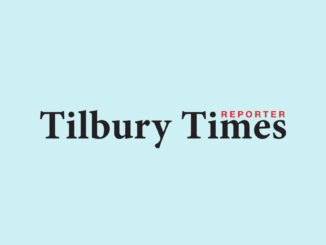
By: Josie Fiegehen, Local Journalism Initiative Reporter, SaultOnline.com
The Grandmother’s Voice is an Indigenous initiative based in Halton, Ontario, with a vision to create a safe and welcoming network where Elders and Knowledge Holders can share their wisdom and teachings.
Sherry Saevil, co-founder of Grandmother’s Voice, works as an Indigenous Education Advisor for Halton Catholic District School Board. She saw the need for more family connection to cultural teachings in the school board.
“There was a really big need to fill the gap between the community and the schools. The kids are learning this information, but the parents aren’t,” Jody Harbour, co-founder of Grandmother’s Voice shares.
Grandmother’s Voice became a community for Indigenous people to share their knowledge with non-indigenous people. “Our teachings are really about connecting people and bringing them together. We were told that Turtle Island was going to need healing, and that it was going to come from Indigenous ways of knowing and connection to land,” Harbour shares.
The Grandmother’s Voice announced on Red Dress Day that they have secured lands for a living monument in honour of MMIWG2S.
This living monument is a tribute to MMIWG2S and the families of those affected. This will be a healing/medicine garden, and a safe space for people to gather and heal.
The garden was designed in collaboration with Grandmother Renee Thomas-Hill and Miinikaan Innovation and Design to resemble a longhouse structure.
“Our vision was to create this living monument so people can come together, heal, and be creative together. We were seeing these cement structures being put up, and the grandmothers actually said, well, there’s not really a spirit in that. There’s a spirit in everything but, we loved the idea of creating something that’s living, that will bring community members together to heal,” Harbour shares.
The land was gifted to Grandmother’s Voice by CEO Jamie Reaume, of Country Heritage Park in Milton, Ontario, located directly off of the 401. The living monument is currently still in the works as community volunteers plant and sow healing medicines.
Grandmother’s Voice is actively working to be a voice for the urban Indigenous community, and to bring Indigeneity into spaces to educate others, “our elders say, when you have culture, then you understand where you belong, and then you can start healing,” Harbour shares, “this knowledge wasn’t meant to just be sitting in circles anymore. We need to create a really big circle, and we need to include everyone.”
Grandmother’s Voice offers many resources for both Indigenous and non-Indigenous to learn and bring these conversations out into the mainstream. Their work can be viewed as a blueprint for other communities to engage in this constantly evolving pandemic state.



Be the first to comment